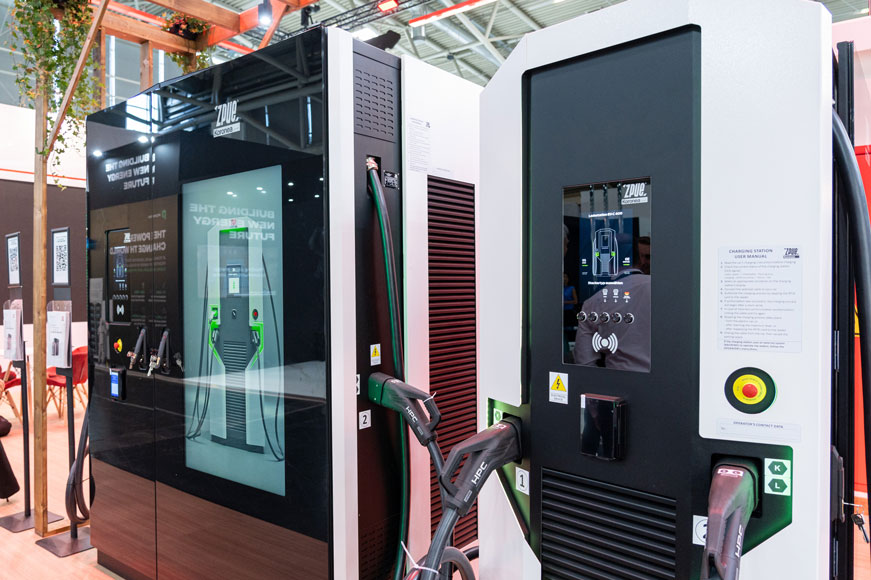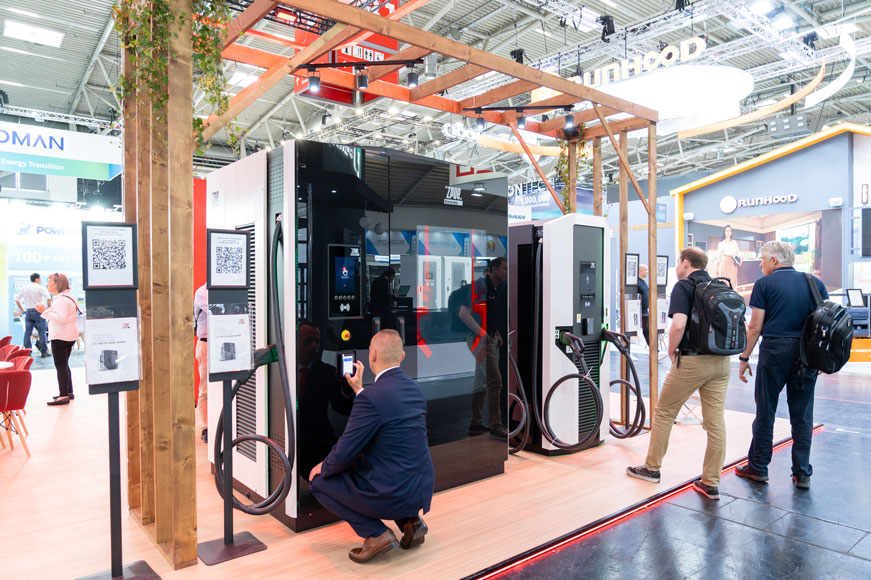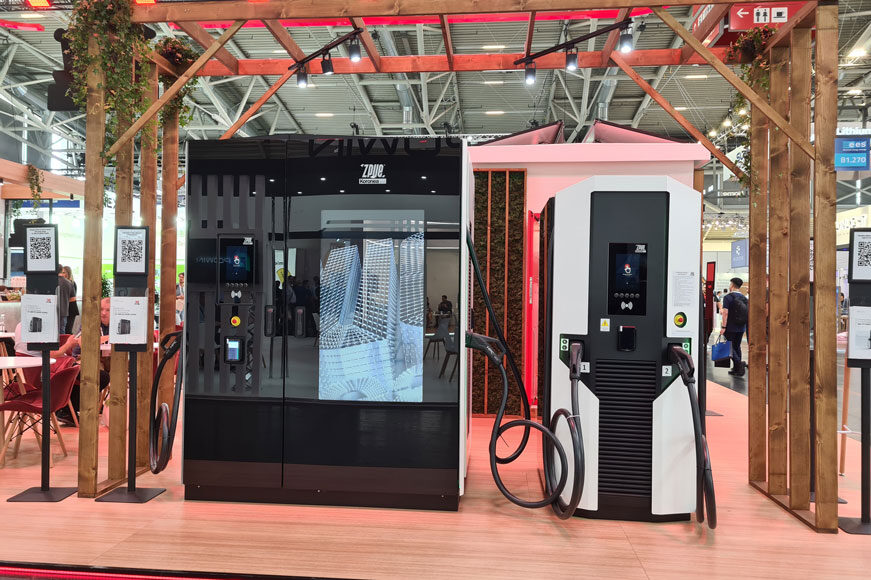One unit with two fully functional installations: a fast vehicle charging station and energy storage. If a PV installation is hooked up to this, the car will then be charged with green energy.
The DC Booster is a patent that is particularly beneficial for locations that do not have the option of converting the network and therefore have low connection capacity.

This solution is the latest result of the work of ZPUE S.A. engineers, who were looking for an option that did not require a radical modernisation of the network.
This device can find its application in existing petrol stations, which have a connection power of 50-70 kW, which is only sufficient to power distributors, lighting or a small catering business. Meanwhile, as we move towards electromobility, we want to quickly ‘refuel’ the car with electricity there,’ Krzysztof Wybrański, Director of New Technology Development at ZPUE S.A., shows an example of the location of this modern infrastructural solution.
This is because an EV-CME charging station integrated with an energy storage facility makes it possible to charge EVs efficiently, especially in locations that are struggling with insufficient power or where it may prove too expensive to bring a high-powered connection there.
65 kW is sufficient
With this technology, it is possible to place charging stations in strategic locations without the need for significant redevelopment of existing infrastructure. For the DC Booster, it is sufficient to have a connection power of up to 65 kW, so an existing connection is often sufficient.
The unit also offers all the control functions provided by energy storage. In addition, back-up circuits can also be supplied (UPS function). In the event of a power failure, the unit is able to supply energy.

Krzysztof Wybrański explains practically how it works:
We can charge the energy store at times when there is spare capacity. Only when a car pulls up does it draw this stored energy. However, not at one moment and not all of it. The car charges at maximum power for 5-7 min and then drops down to 100, 80, 60 and finally 50 kW.
The DC Booster can be used by two cars simultaneously in the CCS2 fast charging standard. In addition, the PV connected to this device provides charging with RES energy.
The product is very aesthetically pleasing, equipped with a multimedia screen on which advertising content can appear.
The DC Booster was shown by the company at the recent Munich EES Europe trade fair, where it attracted huge interest.
Technical details
The charter for this device reads:
The station’s housing is made of powder-coated stainless steel and has an IP54 protection rating and IK10 mechanical resistance, making it weatherproof. Authorisation of the charging process takes place via an RFID reader or optionally via an external application.

The EV-CME offers direct current (DC) charging of electric vehicles with up to 150 kW via two Type 2 CCS connectors. The unit is supplied with three-phase 400 V at 50 Hz in TN, with a connection power of 65 kVA. The substation supports the OCPP 1.6 communication protocol and is equipped with a GSM modem as standard. Operation is via a touchscreen display or optionally via the charging service provider’s application.
A key component of the station is an energy storage system based on 142 kWh lithium-ion batteries.
Higher performance EV-CMEs are possible.

